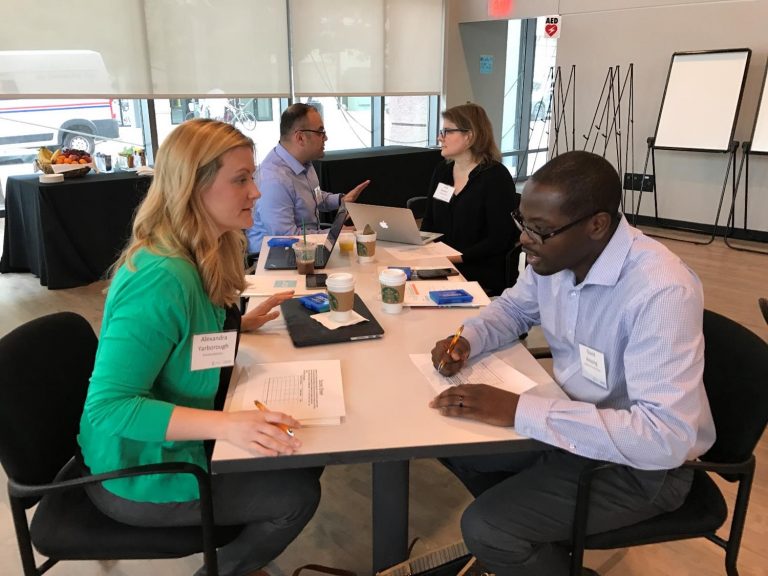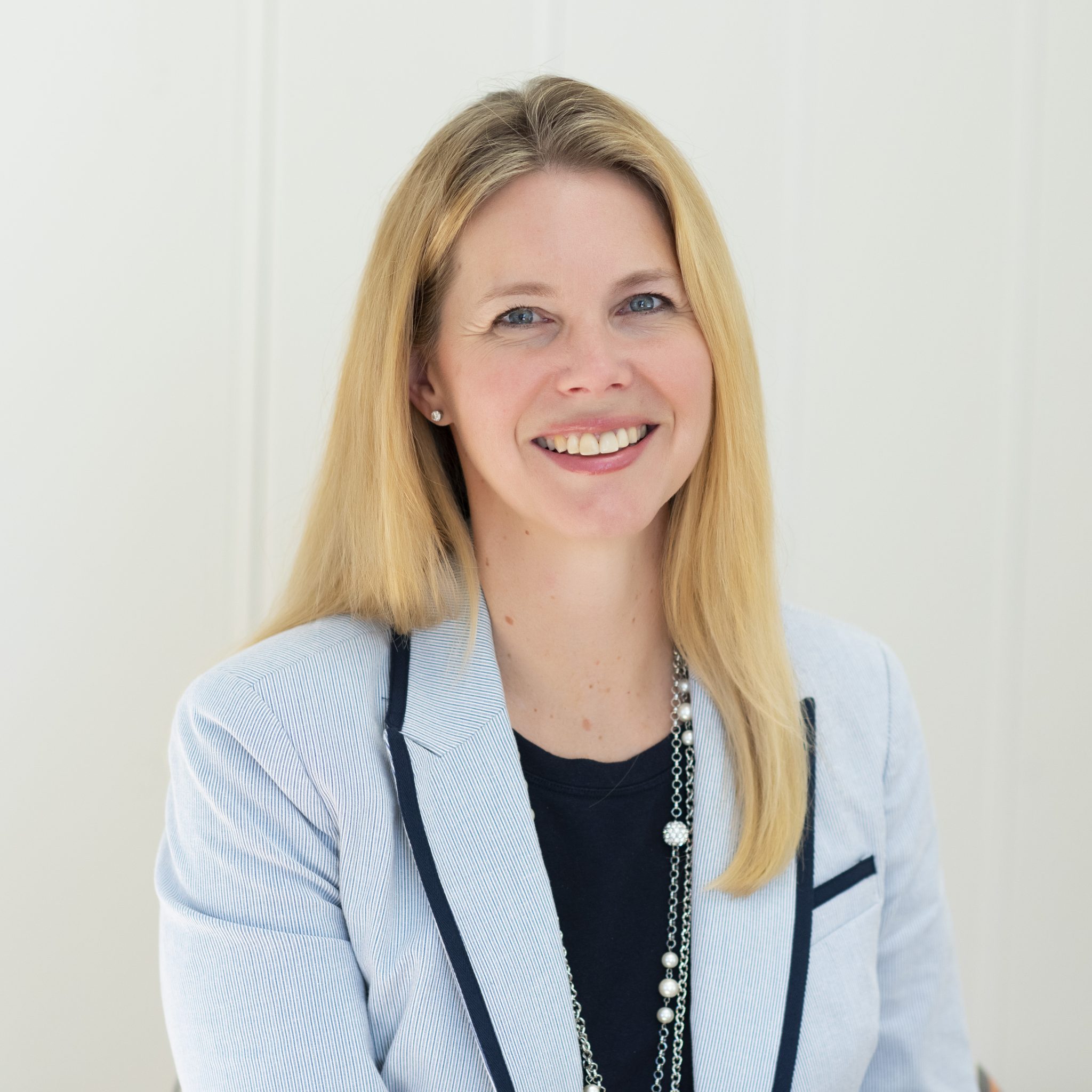

Design thinking helps you create better products, services and outcomes by solving problems with end-users in mind. It’s more than simple brainstorming, so what basics do you need to know? Faculty design thinking experts from UNC-Chapel Hill offer practical advice to get you started.

Innovate Carolina team talked with two of our design thinking experts to explore the phases of this problem-solving method: Melissa Carrier, a professor of the practice the Department of Public Policy and director of social innovation with Innovate Carolina; and Liz Chen, assistant professor at the Gillings School of Global Public Health and Innovate Carolina’s design thinking lead. Melissa and Liz provide design thinking workshops and consults to Carolina faculty and startups, plus organizations outside the University via Innovate Carolina’s innovation services hub.
In a three-part series, we explore key phases of design thinking: Inspiration, Ideation and Implementation. This week, we look at Inspiration.
Liz: In addition to problem and challenge identification, it’s also important to consider and identify all the people who are proximate to the problem or challenge. If we focus only on a narrow set of people and their experiences and design for them without considering all the other people who are related to the challenge, we lose a lot of opportunity to collaborate and generate ideas alongside these folks as well.
Melissa: I would definitely echo that point. Sometimes we get focused on simply just trying to better understand the problem in this phase, but in doing that, we also need to get a more robust view of all affected stakeholders. As a designer, I think inspiration is the critical phase to begin to develop a deep set of empathy and understanding for those stakeholders by zooming in on individual needs, wants and motivations. You’re drawn to a problem statement in a big picture sense but then you need to spend a lot of time up front better understanding the challenge through the eyes of those who experience it.
Liz: One set of activities that can help you think creatively and differently is analogous inspiration. This lets you think about the problem at hand and distill it down to what we want people to think, do, or feel in the future. It’s helpful to consider other contexts. For example, in our class we talk about voting and how a particular challenge might have been increasing the number of millennials voting at the polls for the 2020 election. And if you look at core behaviors of millennials showing up to a place at a certain time, much like you would show up for a doctor’s appointment or for a romantic date… this may help you understand how people hold themselves accountable and make plans for those situations. This can help you think through the questions that your team might want to answer, or just provide another form of inspiration to reframe the challenge and distill it down to its most basic components.


Liz: Talking to real people is key in this phase. Often, we’re handed data in some form, and then we’re expected to take that data and move forward linearly to offer solutions. And usually, that data is not real people. So we emphasize the importance of having members of design teams engage with real people so they can ask questions and better understand the context, while gathering data that was likely not gathered in the first pass.
Melissa: There are core primary methods, such as stakeholder interviews that Liz describes above. To augment interviews, we encourage teams to use the tools of observation. You are either in a space observing what’s happening around you… not necessarily interacting, but watching how people are doing something or interacting with one another, or interacting with a product or a service. By doing both of these methods, you are better prepared to bring people together to start having conversations around how the problem definition might need to change based on what you learned.
Let’s say you’ve conducted initial interviews and several observations and have some key insights about what you’re hearing/seeing. What do you do with this new information? One technique we teach students is problem re-framing, that is testing the challenge statement by getting feedback from people experiencing the problem and then evaluating how the problem statement needs to changed. This is a key activity before moving on to brainstorming, which is in the ideation phase. We encourage students and clients to be open to learning as much as they can during the inspiration phase and then circle back on redefining that challenge with stakeholders. Doing this well sets the design team up for a successful ideation phase.
Also, in the interview process at this stage, you don’t need to interview 100 people. We tell our students that we’re talking about seven-to-ten people. You’re trying to get a sense of what people are experiencing and feeling and the challenges they’re facing. You’re not trying to gather statistically significant data sets. We’re really just out to listen and more deeply understand.
Liz: I agree, and as we are recruiting people for interviews, we are strategically inviting people with diverse sets of experiences. We want to find people who have different experiences with the challenge or problem and understand their wants and needs, knowing that if we are able to understand lots of people with diverse experiences, that’ll better help us create the solution.
Back to my earlier voting example, when people think about recruiting in terms of diverse groups or samples, they often think about demographic characteristics, and that’s definitely one aspect. We also want to ask ourselves ‘what do typical people impacted by the challenge or problem think, feel and do?’ Millennials likely have registered to vote or have voted in one or more previous elections. They have a party affiliation and yet might talk to friends and family about upcoming elections. For those who are considered extremes, you might have folks who have never voted even though they’ve been qualified. They might say that voting is silly and doesn’t matter. Then on the flip side, you might have someone who is out convincing people that it’s really important to register to early vote and who show up at campaign events to support their candidates. So we ask ourselves “what do typical and extreme users think, say and do?,” and then have that inform who we invite to interview and interact with throughout the design thinking process. You really want to engage with the full range of people approximate to the challenge.


Liz: I think words like customer research and market research make the process seem very formal or that there are desired outcomes. The inspiration phase is really a generative phase, meant to be a set of activities that broadens peoples’ views and perspectives. There are a lot of open-ended questions as well as information gathering at this stage without many conclusions made.
Melissa: I think you don’t embark on a design thinking practice or project unless you are willing or open to not having the answer immediately. There are certain problems that are better suited for a design thinking process, and those are ones where there’s not a clear “best” answer and uncertainty is the only thing that is certain. If you are working in a stable and predictable environment, teams can build a marketing plan and go sell more product for example. But if preferences and trends are changing faster than we can look at retrospective sales data to make decisions going forward, the design process is incredibly valuable to help open up possibilities. So I think the reason this phase is called inspiration is because you have to approach it with a sense of humility, a sense of not having all the answers (yes that means recognizing the limitations of analytical data available to us) and a deep sense of curiosity.
Teams choose design thinking to explore and learn things that maybe they didn’t already know. Sometimes teams, especially in industry, try to move quickly through inspiration and immediately think “I’m just going to go do some brainstorming to get a bunch of creative ideas that I can then launch.” And what Liz and I try to emphasize in the course and through our work with clients is that Inspiration is the most important phase. We actually want you to spend the most time in the inspiration phase, sitting in the ambiguity of the problem you are trying to solve.
Liz: Yes, I agree. And often, students and clients will either shift their original problem statements or challenges entirely or further refine them. Approaching inspiration with an exploratory mindset and being very open is key.
Liz: To get to know interview participants as people and to emphasize that they are experts. Asking open ended questions is key to building rapport. They are coming to the table to provide their wealth of knowledge to our students and to us as a design team.
Melissa: Yes, asking open ended questions for about 30-to-60 minutes works well. If you have 60 minutes for an interview, you’re going to spend the first ten or 15 minutes just building trust. Our natural inclination might be to come in with a list of questions and immediately jump into them so we can get our answers and move to the next step. We train students how to take time to build rapport with interviewees. Sometimes you’re working on problems that people have been facing for a really long time so there’s a lot of deep-seated emotions that you’re uncovering on top of the simple actions or activities that they’re trying to get done. You slowly work into those more open-ended questions that are going to be the focus of the interview. We also encourage design teams to do more listening than talking. We typically say 80 percent of an interview should be the interviewee doing the talking, not you. And that can be really hard for those of us trained to be the expert in the room.
Liz: I agree, we aim for 80 percent of interviewees talking and 20 percent of interviewers talking. We encourage people to practice their wait times after questions have been asked. Our students practice before they do interviews, and I think that is really crucial. This helps build confidence with students in being able to facilitate an interview, but also really helps to make sure the questions being asked are being interpreted in the way intended.
Liz: It’s important to have multiple team members (and even stakeholders who are proximate to the challenge) participate in synthesizing the information collected during Inspiration. We ask ourselves some questions. For example, “What is surprising from what we heard? What are some of the biggest assumptions we have now? What are our lessons learned overall?”
Liz: You can stay in the Inspiration phase indefinitely so real-world constraints (time, money, other resources) can be helpful here. It’s expected that after a solid set of Inspiration activities, you will likely approach or reach saturation where you aren’t hearing lots of new things with each additional interaction. At that point, we recommend you move into the Ideation phase and circle back to Inspiration methods as needed. For example, it’s possible that something you hear in the Ideation phase prompts you to go back to conduct additional interviews with a different stakeholder group that you didn’t engage with in the initial round.
Ready to incorporate design thinking into your work or research? For any questions on how to get started with design thinking, explore Innovate Carolina’s design thinking services or contact Liz Chen at Liz.Chen@unc.edu.